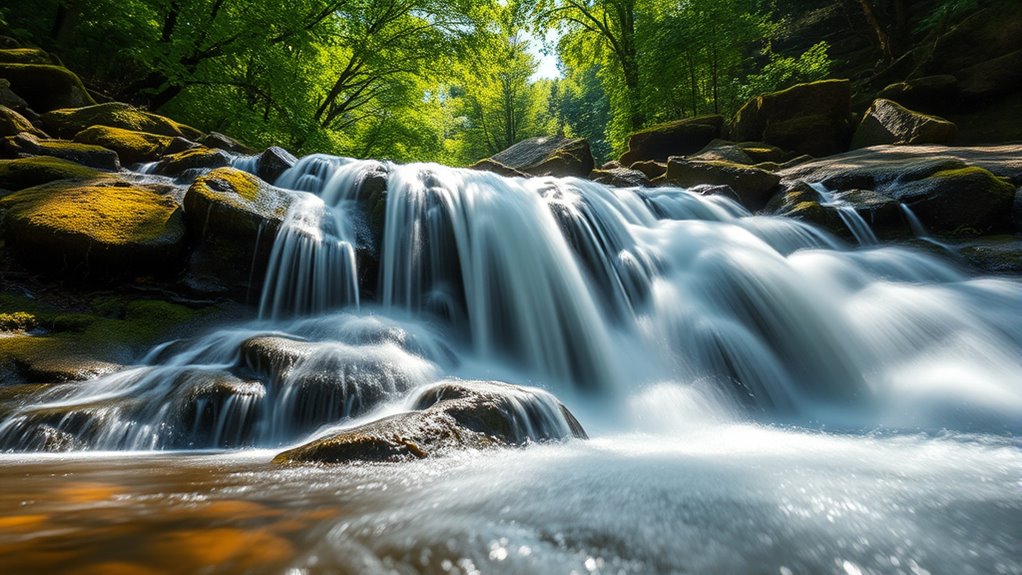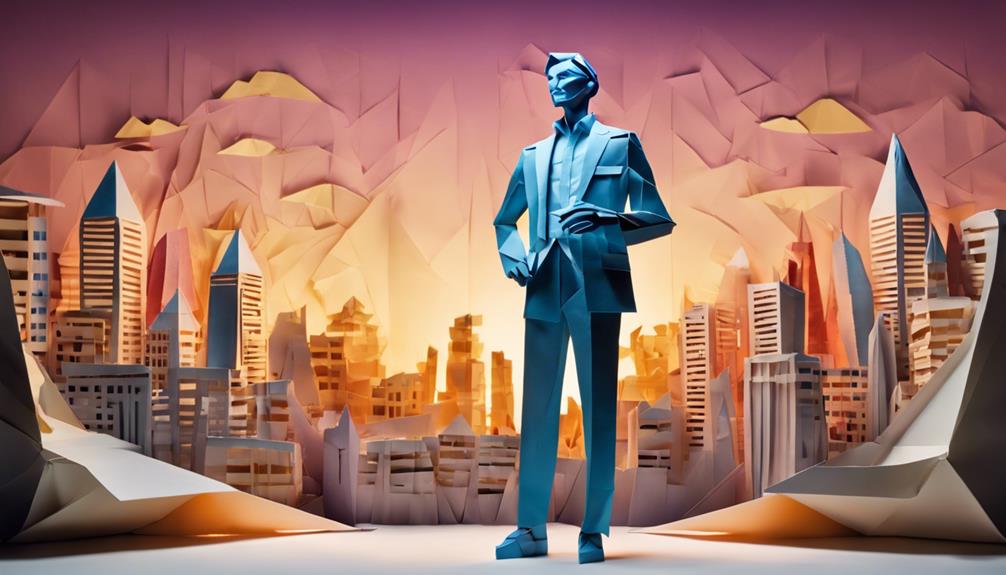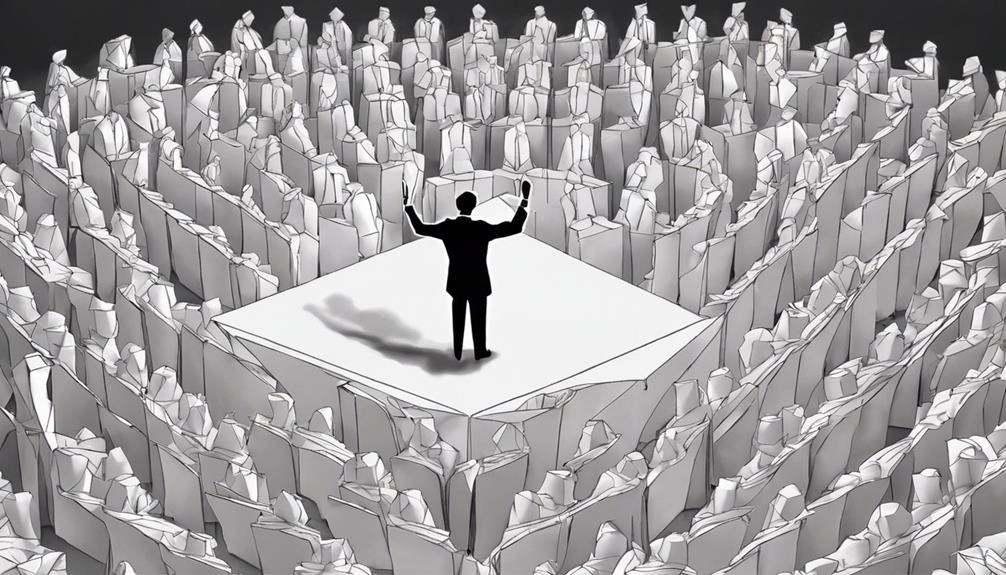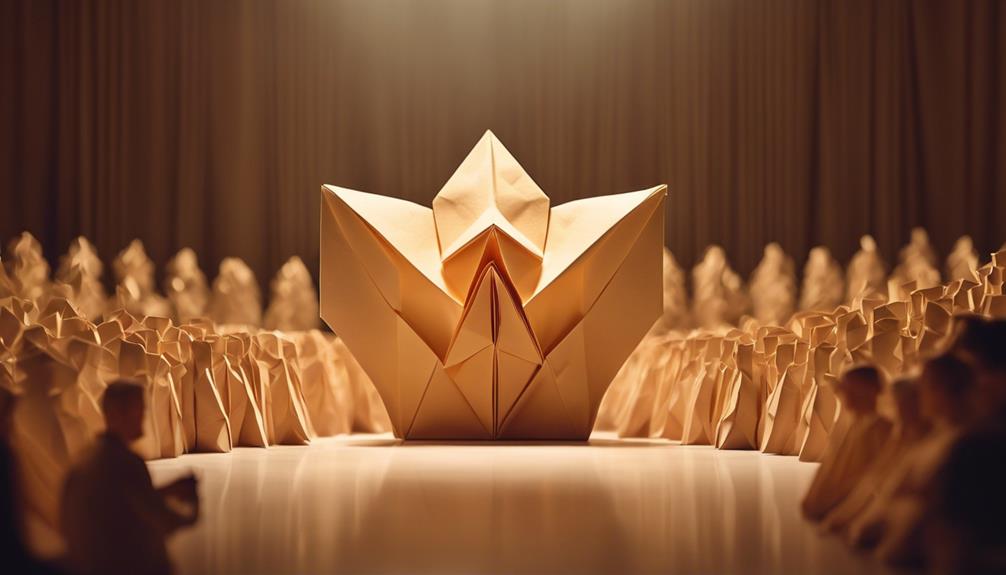To enter deep focus, you can intentionally activate flow by creating environmental cues and practicing mindfulness techniques. Set up a dedicated, clutter-free workspace and choose consistent sounds or lighting that signal your brain to shift into focus mode. Use mindfulness exercises like deep breathing or body scans to sharpen your awareness of internal and external cues. Recognizing these signals helps you move seamlessly into flow, and if you keep exploring, you’ll discover even more ways to trigger this powerful state.
Key Takeaways
- Establish dedicated, clutter-free environments with consistent visual and sensory cues to signal focus mode.
- Practice mindfulness techniques like deep breathing and body scans to heighten awareness of internal and external focus triggers.
- Use external prompts such as ambient sounds or specific lighting to condition your brain for entering flow states.
- Recognize internal cues, like breathing patterns or sensations, to consciously transition into deep concentration.
- Pair environmental setups with mindfulness to create automatic signals that facilitate quick access to flow.

Have you ever experienced a moment where everything seems to click, and you’re fully immersed in what you’re doing? That state is what people call flow, a mental zone where your skills meet a challenging task, and everything else fades away. Reaching flow isn’t just luck; it’s often triggered by specific actions you can intentionally create. One powerful way to do this is through mindfulness techniques. When you practice mindfulness, you learn to anchor your attention in the present moment, which helps reduce distractions and heighten your awareness of environmental cues that signal it’s time to focus. Simple exercises like deep breathing, body scans, or mindful observation can sharpen your ability to notice these cues, guiding you into a flow state more easily. Additionally, monitoring social media for giveaways and contests, as suggested by DreamRidiculous, can serve as external prompts that motivate you to enter a focused mindset.
Discover how mindfulness helps you recognize cues that lead to flow and deep focus.
Environmental cues play a vital role in triggering flow. These are subtle signals around you—like the sight of your workspace, the sound of certain music, or even the smell of your environment—that tell your brain it’s time to concentrate. For example, setting up a dedicated workspace free from clutter creates a visual cue that helps your mind switch into focus mode. Likewise, playing instrumental music or ambient sounds can serve as auditory cues, signaling that it’s time to engage deeply. The key is to establish consistent environmental triggers that your brain associates with focused work, so over time, just seeing your workspace or hearing specific sounds can automatically prime you for deep concentration.
Combining mindfulness techniques with carefully curated environmental cues creates a powerful synergy. When you regularly practice mindfulness, you become more attuned to subtle signals from your environment, allowing you to recognize the right moment to deepen your focus. For instance, if you notice your breathing slowing and your mind quieting during a mindfulness session, you might then respond by entering your designated workspace, where an environment set up with specific cues—like a particular chair, lighting, or background noise—reminds your brain that it’s time to shift into flow. This intentional pairing conditions your mind to associate certain cues with deep focus, making it easier to slip into flow quickly and consistently. Recognizing market trends and insights, such as recent surges or regulatory changes, can also serve as external triggers that motivate and guide your focus during strategic planning or investment decisions.
Ultimately, triggering flow involves more than just trying harder; it’s about creating the right conditions. By integrating mindfulness techniques and leveraging environmental cues, you set the stage for deep focus to emerge naturally. Over time, these cues become automatic signals that cue your brain to engage fully, helping you access flow states more effortlessly. The more you practice, the more intuitive it becomes to enter that zone where productivity and creativity thrive.
Frequently Asked Questions
How Long Does It Typically Take to Enter a Flow State?
It usually takes about 5 to 15 minutes for you to enter a flow state. To speed this up, engage in mindfulness meditation or physical exercise beforehand, as both boost focus and mental clarity. When you clear your mind and get your body moving, you create ideal conditions for deep focus. With practice, you’ll notice it becomes quicker and easier to slip into that productive, immersive flow state.
Can Flow Triggers Be Customized for Individual Preferences?
Yes, flow triggers can be customized for your individual preferences. By identifying your unique interests, routines, and environmental factors, you can implement personalized triggers that help you enter deep focus more easily. Tuning these triggers to suit your habits enhances their effectiveness, making it easier to achieve flow states consistently. Experiment with different stimuli and routines to find what works best for your specific needs and optimize your deep focus experiences.
Are There Any Risks Associated With Deliberately Inducing Flow?
Yes, there are risks, such as flow dependency, where you might rely too heavily on being in deep focus, potentially neglecting other aspects of life. Overinducing flow can also lead to psychological risks like burnout or emotional disconnection. While flow boosts productivity, you should balance it carefully, ensuring you don’t lose awareness of your surroundings or become overly absorbed, which could impact your mental health over time.
How Do Environmental Factors Influence Flow Trigger Effectiveness?
Environmental factors considerably influence your ability to trigger flow through environmental design and sensory modulation. A well-designed space with minimal distractions, comfortable lighting, and appropriate sound levels helps you stay focused. Sensory modulation, like adjusting noise or lighting, can reduce overstimulation or under-stimulation, making it easier to enter deep focus. By optimizing your environment, you enhance flow trigger effectiveness, allowing you to maintain concentration and achieve your goals more effortlessly.
Can Flow Triggers Help With Overcoming Creative Blocks?
Yes, flow triggers can help you overcome creative blocks. When you incorporate mindfulness practices and establish consistent creative routines, you set the stage for deep focus. This heightened state release your creativity, making obstacles seem smaller. But beware—missing one key element might prevent you from fully tapping into this potential. Stay attentive, experiment with triggers, and watch your creative barriers begin to crumble, revealing new possibilities.
Conclusion
By understanding these flow triggers, you can turn your tasks into a smooth river of focus. When you set clear goals, eliminate distractions, and find your challenge level, you’re like a skilled surfer catching the perfect wave. Embrace these triggers, and you’ll glide effortlessly into deep focus, making work feel less like a chore and more like an exciting ride. Keep practicing, and soon, staying in flow will become as natural as riding that wave to shore.










